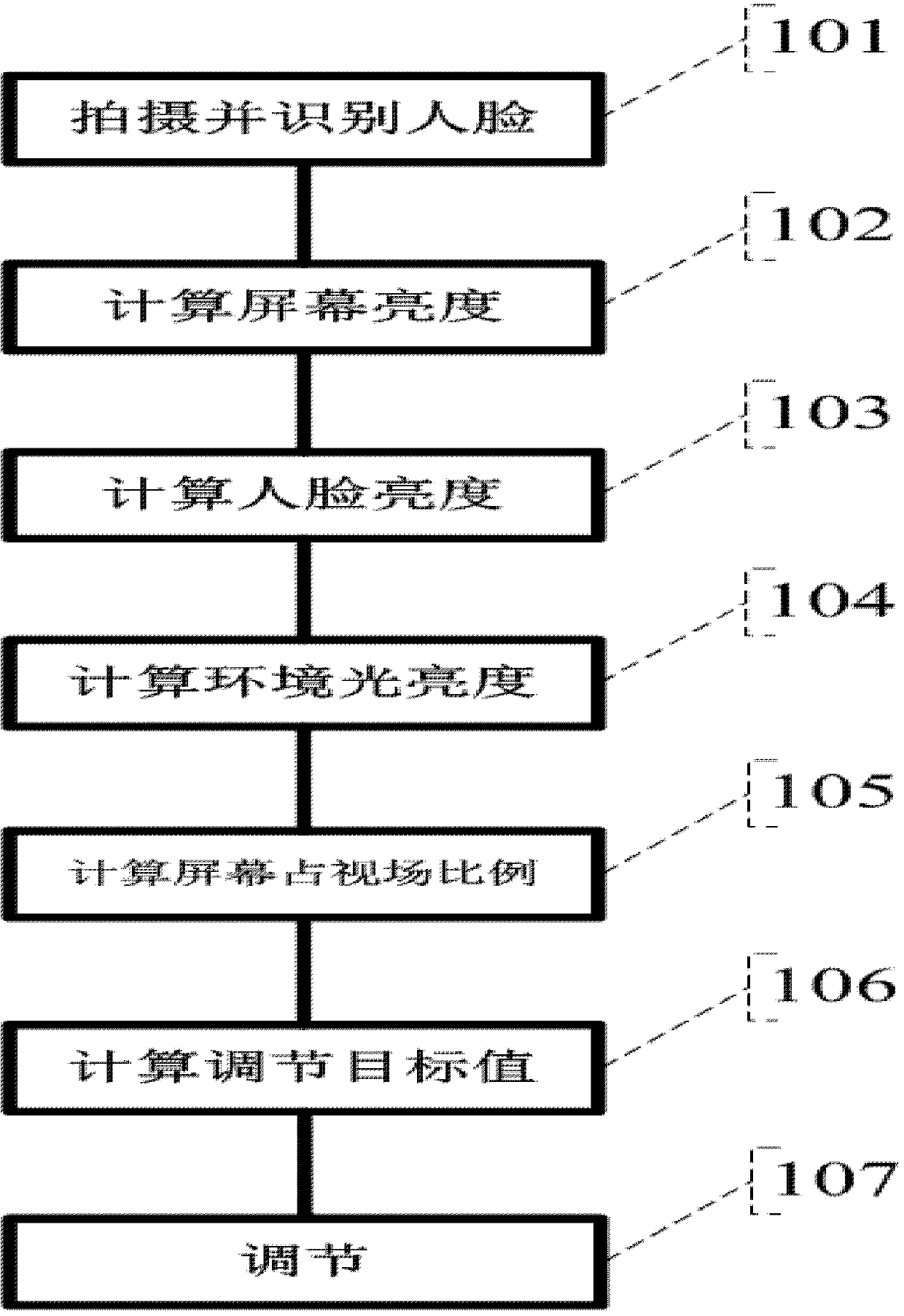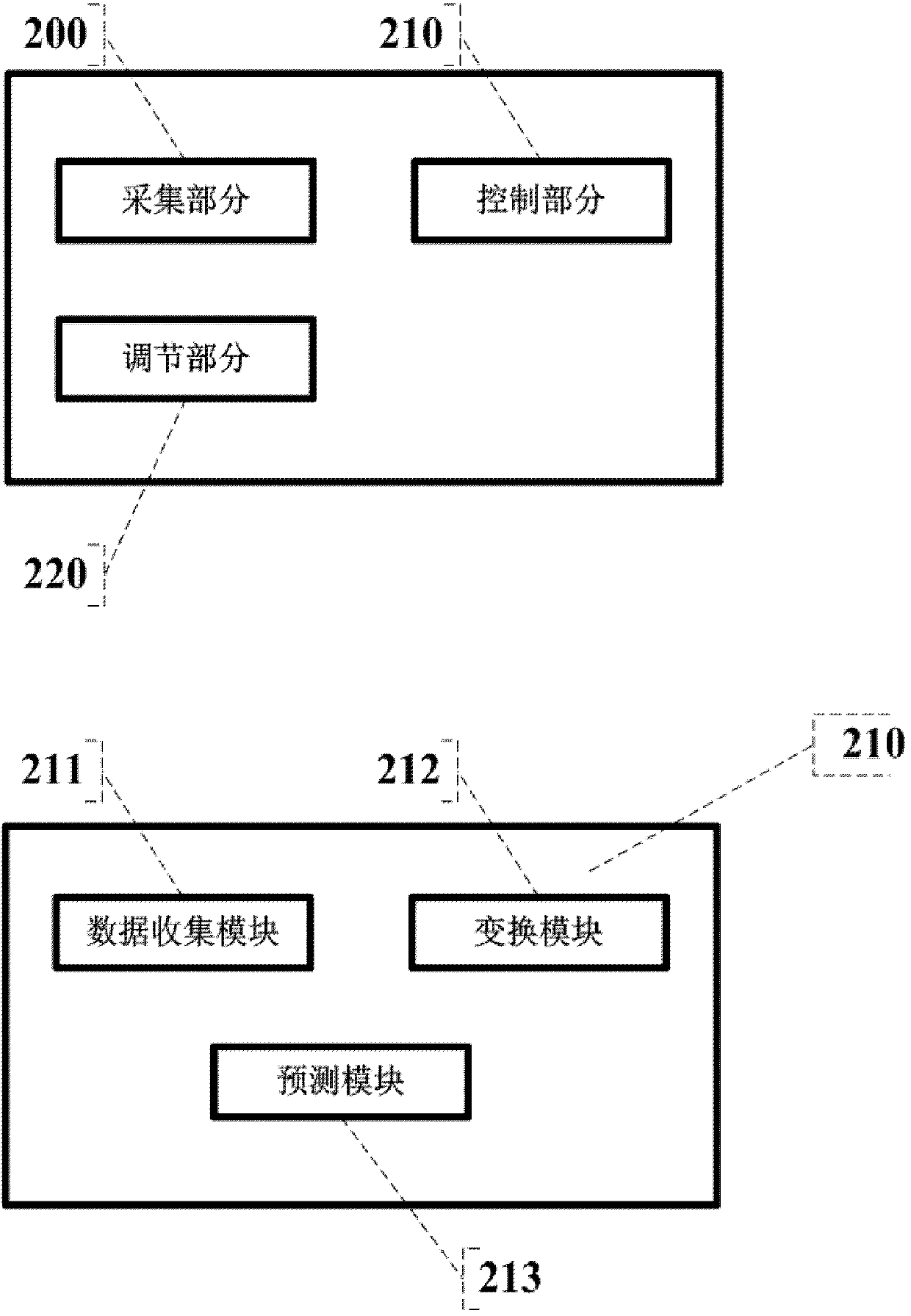[0003] 1. The invention patent with the application number "201410583857.0" only pays attention to the influence of light and shadow when removing
environmental noise, and does not consider the influence of the screen display on the detected
illuminance value. If the orientation of the sensor for detecting
illuminance is consistent with the orientation of the screen, The
impact of the display content of the screen and the brightness of the screen on the
illuminance sensor is not considered in the invention
patent application number "201410583857.0"; if the orientation of the sensor for detecting illuminance is inconsistent with the orientation of the screen, the obtained data is not the same as when the user's eyes are looking at the screen. The light from the direction of the eyes, the light from a different angle has nothing to do with the light from the direction of the user's eyes, and the illuminance value has no use. , except that the sensor in the direction of the screen is valuable to the invention patent with the application number "201410583857.0", the sensor in other directions has no value to the invention patent with the application number "201410583857.0"
[0004] 2. The invention patents with application numbers of "201410583857.0", "201510242504.9", and "201410757114.0" detect the current illuminance only the ambient illuminance value, and do not care about the illuminance value of the light entering the user's eyes. Under the value, the light entering the user's eyes may be strong or weak, so the ambient
light intensity value cannot be used as a reference value for adjusting the screen brightness. The invention patents with application numbers "201410583857.0", "201510242504.9", and "201410757114.0" use ambient
light intensity value as the only reference value for adjusting the brightness of the screen loses its use value, and in some extreme cases will cause reverse adjustment
[0005] 3. Invention patents with application numbers "201410583857.0" and "201510242504.9" may cause self-excitation. If the screen is brightened due to changes in the ambient
light intensity during use of this invention patent, the increase in the brightness of the screen will increase the value of the ambient light intensity. After the increase, according to the method described in the invention patent with the application number "201410583857.0", the screen will be brightened again to form a self-excited
[0006] 4. The invention patent with the application number "201410583857.0" normalizes the ambient illuminance and screen brightness. After normalization, if the ratio of ambient illuminance and screen brightness is equal, the adjustment method is the same. It is not suitable when the light is too bright or too dark, and the change is not linear when it is too dark
[0007] The reason why the screen of a mobile terminal is too bright and hurts the
human eye is that the brightness of the screen is higher than the background. The
pupil of the
human eye is used to adjust the amount of light entering the
human eye. Excessive light entering will damage the visual cells on the
retina. The
pupil adjustment is based on the current The total amount of incoming light, if the brightness of the screen is higher than the background, the total amount of incoming light is not high, and the pupils will open relatively large, resulting in some visual cells receiving excessive light, which will cause damage to the eyes
[0008] In a dark environment (when the brightness is lower than 10-²cd / m²), such as at night without light, the cone cells of the human eye lose their light-sensing effect, the
visual function is replaced by rod cells, and the human eye loses the ability to perceive color. Only white and gray can be distinguished; in a darker environment (when the brightness is between 10-²cd / m² and 10cd / m²), the cone cells and rod cells of the human eye work at the same time; in a bright environment (brightness When it is higher than 10cd / m²), the cone cells of the human eye work, and the rod cells lose their photosensitive function. For the human eye, the ambient light is the light entering the human eye from the frontal viewing angle, and the light from other directions is regardless of its size or strength. It does not have any effect on the
perception of the human eye; under different ambient brightness conditions, in order to enable users to get a good experience, different adjustment methods are required, especially in the case of low brightness, the adjustment of screen brightness It will have a relatively large
impact on the use environment of the human eye. In order to protect the human eye, the brightness needs to be optimized; the current adjustment of the screen brightness of the mobile terminal does not take into account the influence of the distance between the
background light and the mobile terminal on the
perception of the human eye.
 Login to View More
Login to View More  Login to View More
Login to View More 

